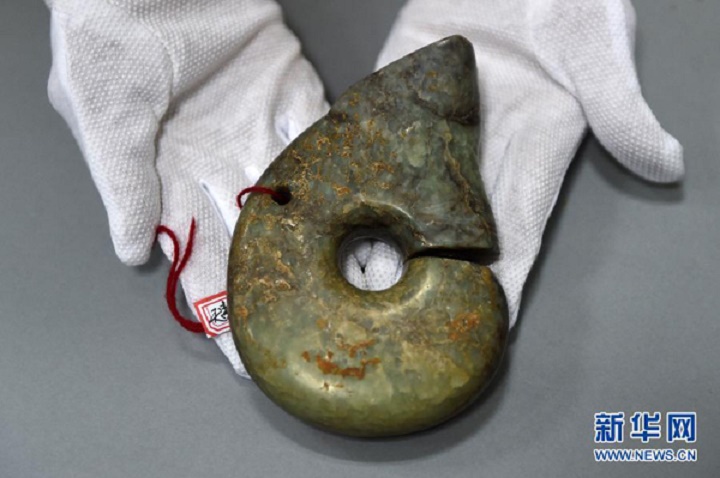
[Credit: Xinhuanet]
The robbers worked in 10 separate groups and four suspects are archaeologists, the ministry said. Each group had a clear division of labor covering everything from excavation to sales, the ministry said.
They were found to have robbed ancient tombs from the Neolithic Age to Qing Dynasty (1644-1911) in seven provinces and 10 cities, it said.
Police have recovered some extremely precious artifacts including jadeware and earthenware dating to the Neolithic Age, porcelain from the Liao Dynasty (907-1125), as well as ironware, silverware and gold items from the Jin (1115-1234) and Yuan (1206-1368) dynasties, The Beijing Times reported yesterday.
“Many recovered pieces fill in gaps that existed in our archaeological finds,” said Zhang Guilian, director of the Liaoning cultural relics administration.



[Credit: Xinhuanet]
The pieces included a coiled jade dragon, one of the earliest known representations of the Chinese totem. It had been sold by an archaeologist surnamed Deng for 3.2 million yuan (US$516,000), the report said.
The cross-provincial network emerged after police in Liaoning Province found signs of illegal excavations in Niuheliang, a Neolithic site in Chaoyang City, the newspaper said.
The site was discovered in 1981 and given protected status in 1988. It boasts ancient temples, altars and tombs believed to have significant scientific, historical and artistic value. The discovery of the site provided new evidence that Chinese civilization originated about 5,000 years ago.
After a five-month investigation, Chaoyang police located several gangs and their ringleaders, the report said.
One alleged ringleader, surnamed Yao, 53, had more than 30 years of grave robbery experience, according to the report. He used astrology and feng shui, a Chinese system of geomancy, to decide where to dig. He asked subordinates, mostly farmers, to do the excavation work, police were cited as saying.
He robbed tombs in Inner Mongolia, Liaoning and Hebei and his actions damaged the relics, police said in the report.
His group was found to have committed 23 robberies at ancient tombs or cultural relic sites, the report said. Police have recovered 263 pieces from the group, the newspaper added.
Last December, police from seven provinces and 10 cities launched the first intensive crackdown and netted 78 suspects. In follow-up operations police caught another 97, according to the newspaper report.
Author: Li Qian | Source: Shanghai Daily [May 28, 2015]